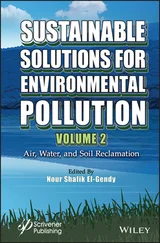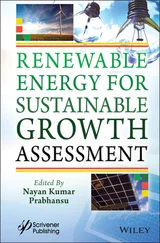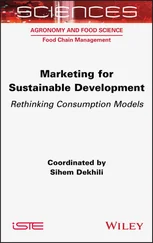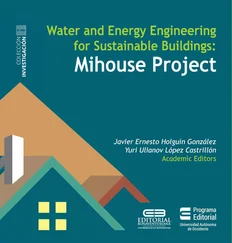This chapter reflects detailed information on the utilization of biosurfactants as a potential substitute in the heavy metal ions bioremediation process from the polluted environment. Designing the new strategies and technologies is the need of society in order to minimize the biosurfactant production cost at a commercial scale and make the production process economically competitive. The biosurfactants formation costs can be decreased by lowering the number of agro‐industrial mistakes and the waste that treatment uses up. Agro‐industrial waste‐based biosurfactant generation renders another option for cheap and commercially viable biosurfactant production. For various applications, biosurfactants moved to generally regarded as safe (GRAS) microorganisms like lactobacilli and yeasts, which have astounding promise. However, significantly more research is now required in this field.
The production and commercial scale application of biosurfactant molecules remains a testing subject, as the planning of an irrefutable item is influenced by various key factors. For the utilization of biosurfactants in various areas, the rules and directions should be detailed. It is very much expected that in the near future such types of microbial strains have been synthesized using genetic engineering techniques that large‐scale production using crude materials as well as their industrial scale application will be possible. In terms of lowering the cost of biosurfactant production, these discussed strategies could prove to be the most economical ones. A stricter positioning of these structures is, therefore, an authoritative step toward production enhancement, production procedure economization, and establishing an economically competitive and successful biosurfactant market, as well as addressing the solid waste disposal issue by efficient conversion of low‐cost solid industrial and agricultural waste into revenue generating value‐added products.
1 1 Khan, M.S., Zaidi, A., Wani, P.A., and Oves, M. (2009). Role of plant growth promoting rhizobacteria in the remediation of metal contaminated soils. Environmental Chemistry Letters 7 (1): 1–19.
2 2 Oliveira, S., Pessenda, L.C., Gouveia, S.E., and Favaro, D.I. (2011). Heavy metal concentrations in soils from a remote oceanic island, Fernando de Noronha, Brazil. Anais da Academia Brasileira de Ciências 83 (4): 1193–1206.
3 3 Sarma, H., Islam, N.F., Borgohain, P. et al. (2016). Localization of polycyclic aromatic hydrocarbons and heavy metals in surface soil of Asia's oldest oil and gas drilling site in Assam, northeast India: implications for the bio economy. Emerging Contaminants 2 (3): 119–127.
4 4 Sarma, H., Sonowa, S., and Prasad, M.N.V. (2019). Plant‐microbiome assisted and biochar‐amended remediation of heavy metals and polyaromatic compounds – A microcosmic study. Ecotoxicology and Environmental Safety 176: 288–299.
5 5 Tian, H.Z., Lu, L., Cheng, K. et al. (2012). Anthropogenic atmospheric nickel emissions and its distribution characteristics in China. Science of the Total Environment 417: 148–157.
6 6 Dixit, R., Malaviya, D., Pandiyan, K. et al. (2015). Bioremediation of heavy metals from soil and aquatic environment: an overview of principles and criteria of fundamental processes. Sustainability 7 (2): 2189–2212.
7 7 Gaur, N., Flora, G., Yadav, M., and Tiwari, A. (2014). A review with recent advancements on bioremediation‐based abolition of heavy metals. Environmental Science: Processes and Impacts 16 (2): 180–193.
8 8 Sarma, H. and Prasad, M.N.V. (2015). Plant‐microbe association‐assisted removal of heavy metals and degradation of polycyclic aromatic hydrocarbons. In: Petroleum Geosciences: Indian Contexts, 219–236. Springer https://doi.org/10.1007/978‐3‐319‐03119‐4_10. ISBN: 978‐3‐319‐03118‐7.
9 9 Sarma, H. and Prasad, M.N.V. (2016). Chapter 24 – Phytomanagement of polycyclic aromatic hydrocarbons and heavy metals‐contaminated sites in Assam, North Eastern State of India, for boosting bioeconomy. In: Bioremediation and Bioeconomy (ed. M.N.V. Prasad), 609–626. Elsevier https://doi.org/10.1016/B978‐0‐12‐802830‐8.00024‐1.
10 10 Tak, H.I., Ahmad, F., and Babalola, O.O. (2013). Advances in the application of plant growth‐promoting rhizobacteria in phytoremediation of heavy metals. In: Reviews of Environmental Contamination and Toxicology, vol. 223, 33–52. New York, NY: Springer.
11 11 Sarma, H., Islam, N.F., and Prasad, M.N.V. (2017). Plant‐microbial association in petroleum and gas exploration sites in the state of Assam, north‐east India – Significance for bioremediation. Environmental Science and Pollution Research 24 (9): 8744–8758.
12 12 Mani, D. and Kumar, C. (2014). Biotechnological advances in bioremediation of heavy metals contaminated ecosystems: an overview with special reference to phytoremediation. International Journal of Environmental Science and Technology 11 (3): 843–872.
13 13 Singh, P. and Cameotra, S.S. (2004). Enhancement of metal bioremediation by use of microbial surfactants. Biochemical and Biophysical Research Communications 319 (2): 291–297.
14 14 Sekhar, K.C., Kamala, C.T., Chary, N.S. et al. (2004). Removal of lead from aqueous solutions using an immobilized biomaterial derived from a plant biomass. Journal of Hazardous Materials 108 (1‐2): 111–117.
15 15 Sarma, H. and Prasad, M.N.V. (2018). Metabolic engineering of rhizobacteria associated with plants for remediation of toxic metals and metalloids. In: Transgenic Plant Technology (ed. M.N.V. Prasad). Elsevier. eBook ISBN: 9780128143902, Paperback ISBN: 9780128143896.
16 16 Dahrazma, B. and Mulligan, C.N. (2007). Investigation of the removal of heavy metals from sediments using rhamnolipid in a continuous flow configuration. Chemosphere 69 (5): 705–711.
17 17 Mulligan, C.N., Yong, R.N., and Gibbs, B.F. (2001). Heavy metal removal from sediments by biosurfactants. Journal of Hazardous Materials 85 (1–2): 111–125.
18 18 Juwarkar, A.A., Nair, A., Dubey, K.V. et al. (2007). Biosurfactant technology for remediation of cadmium and lead contaminated soils. Chemosphere 68 (10): 1996–2002.
19 19 Herman, D.C., Artiola, J.F., and Miller, R.M. (1995). Removal of cadmium, lead, and zinc from soil by a rhamnolipid biosurfactant. Environmental Science and Technology 29 (9): 2280–2285.
20 20 Tan, H., Champion, J.T., Artiola, J.F. et al. (1994). Complexation of cadmium by a rhamnolipid biosurfactant. Environmental Science and Technology 28 (13): 2402–2406.
21 21 Saikia, R.R., Deka, S., Deka, M., and Sarma, H. (2012). Optimization of environmental factors for improved production of rhamnolipid biosurfactant by Pseudomonas aeruginosa RS29 on glycerol. Journal of Basic Microbiology 52 (4): 446–457.
22 22 Mukherjee, S., Das, P., and Sen, R. (2006). Towards commercial production of microbial surfactants. Trends in Biotechnology 24 (11): 509–515.
23 23 Cameotra, S.S., Makkar, R.S., Kaur, J., and Mehta, S.K. (2010). Synthesis of biosurfactants and their advantages to microorganisms and mankind. In: Biosurfactants. Advances in Experimental Medicine and Biology, vol. 672 (ed. R. Sen), 261–280. New York, NY: Springer.
24 24 Shekhar, S., Sundaramanickam, A., and Balasubramanian, T. (2015). Biosurfactant producing microbes and their potential applications: A review. Critical Reviews in Environmental Science and Technology 45 (14): 1522–1554.
25 25 Rodrigues, L.R. (2015). Microbial surfactants: fundamentals and applicability in the formulation of nano‐sized drug delivery vectors. Journal of Colloid and Interface Science 449: 304–316.
26 26 Desai, J.D. and Banat, I.M. (1997). Microbial production of surfactants and their commercial potential. Microbiology and Molecular Biology Review 61 (1): 47–64.
Читать дальше












